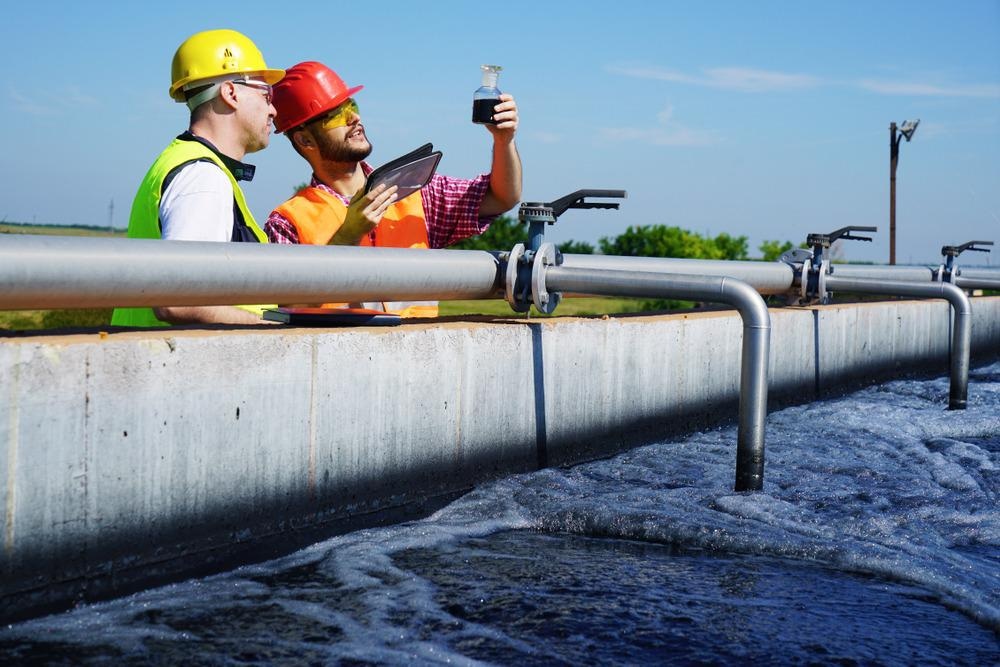Poly(vinylidene fluoride) membranes have recently become the focus of research interest for treating water. Writing in Progress in Polymer Science, Korean scientists have presented a review paper aimed at helping to understand the fundamental science and engineering aspects of manufacturing water treatment membranes with this material, as well as current challenges and opportunities. The paper is currently in the pre-proof stage of publication.

Study: Design strategy of poly(vinylidene fluoride) membranes for water treatment. Image Credit: Avatar_023/Shutterstock.com
Membrane-Based Water Treatment
Water treatment plants are essential for ensuring the continued availability of safe and sanitary water for the global population. Over the years, multiple strategies have been employed to remove pathogens and chemicals from domestic and industrial wastewaters, with membrane-based filtration emerging in recent decades as a viable strategy.
There are several advantages to using membranes for water treatment compared to conventional techniques. Membrane filtration is generally cheaper, requires less or no chemicals, is highly selective, and systems can be tailored for different contaminants. Multiple membranes can be used in filtration systems.
Amongst the various materials investigated for membrane filtration in studies, polymers have emerged as attractive candidates. Compared to ceramic materials, polymers and blends of polymers have advantages such as low cost, easy fabrication, and diverse types of materials available. Poly(vinylidene fluoride) is one polymer that has been evaluated for use as a water treatment membrane.
Poly(Vinyl Fluoride) Membranes
Poly(vinylidene fluoride) has been investigated for use in membrane filtration due to its thermal stability, resistance to aging, superior mechanical strength, and chemical resistance. Additionally, it can be easily fabricated into different structures suitable for this purpose, such as flat sheets, tubular membranes, and hollow fibers.
Compared to polytetrafluoroethylene membranes, however, they suffer from easy wetting by foulant-containing feed solutions in membrane distillation applications, leading to poor long-term stability. Their applications are limited due to poor hydrophilicity and hydrophobicity, and in pressure-driven membrane processes, pure membranes synthesized from this material easily foul in the presence of contaminants.
The problems with this material have facilitated the development of poly(vinylidene fluoride) membranes with enhanced properties. Key to improving their performance is understanding crystal polymorphism in the materials, improving their hydrophobic and hydrophilic performance, and their thermal and chemical stability. Moreover, green chemical methods are a research focus to reduce and eliminate the use of toxic and environmentally damaging solvents.
The number of studies on poly(vinylidene fluoride) stood at 2000 as of 2020, with nearly half of them corresponding to research into membranes fabricated from the material. The rate of publications published has grown steadily in the past few years.
The Study
Based on the growth in research interest in the past decade on poly(vinylidene fluoride) membranes, the authors of the new study in Progress in Polymer Science have stated that a timely review identifying current trends and highlighting various current applications is needed.
In their study, the authors have provided a comprehensive literature review on over two hundred and fifty studies, papers, and reviews covering several aspects of research into poly(vinylidene fluoride) and membranes utilizing this material for filtration and water treatment. Recent strategies for the fabrication of functional poly(vinylidene fluoride) membranes have been discussed in depth by researchers.
The structure and properties of poly(vinylidene fluoride) have been explored comprehensively by the research team. Compared with other types of fluoropolymers, poly(vinylidene fluoride) has a semi-crystalline structure with a melting point of 170 °C and a density of 1.77 kg/m3. This melting point is relatively low. It has a glass transition temperature of -35 °C, and the structure is typically between 50 and 60% crystalline.
Important properties discussed by the authors are solubility, alkali-resistance, and thermal stability. Modification strategies for improving these properties in poly(vinylidene fluoride) and enhancing its performance for membrane-based water treatment have been explored in depth in the review.
The authors have discussed recent advances and trends in design strategies for poly(vinylidene fluoride) membranes. These include the fabrication processing of membranes, materials-blended membranes, and recent advances in 3D printing of patterned membrane surfaces.
It has been noted in the research that 3D printing provides the potential for enhancing separation performance in water treatment applications due to the easy manufacture of desired membrane surface morphologies. The authors have stated that 3D printing will likely play an increasing role in the design of membranes with controlled pore structures for the separation of complex mixtures of fluids and contaminants.
Novel functional membrane surface construction strategies have been explored in the review. Green synthesis techniques such as non-toxic solvent and solvent-free methods have been investigated. Additionally, the authors have discussed recent advances in creating blended materials using copolymers and inorganic nanoparticles, as well as surface modification strategies.
Advanced membranes have been investigated in the study, including self-cleaning membranes, conductive membranes, photocatalytic membranes, β-phase-based piezoelectric membranes, and smart-responsive membranes. Overall, this comprehensive review has provided significant insight into the current progress and future perspectives of poly(vinylidene fluoride) membranes for water treatment applications.
Further Reading
Zou, D & Lee, Y.M (2022) Design strategy of poly(vinylidene fluoride) membranes for water treatment [pre-proof] Progress in Polymer Science 101535 | sciencedirect.com. Available at: https://www.sciencedirect.com/science/article/pii/S0079670022000338
Disclaimer: The views expressed here are those of the author expressed in their private capacity and do not necessarily represent the views of AZoM.com Limited T/A AZoNetwork the owner and operator of this website. This disclaimer forms part of the Terms and conditions of use of this website.